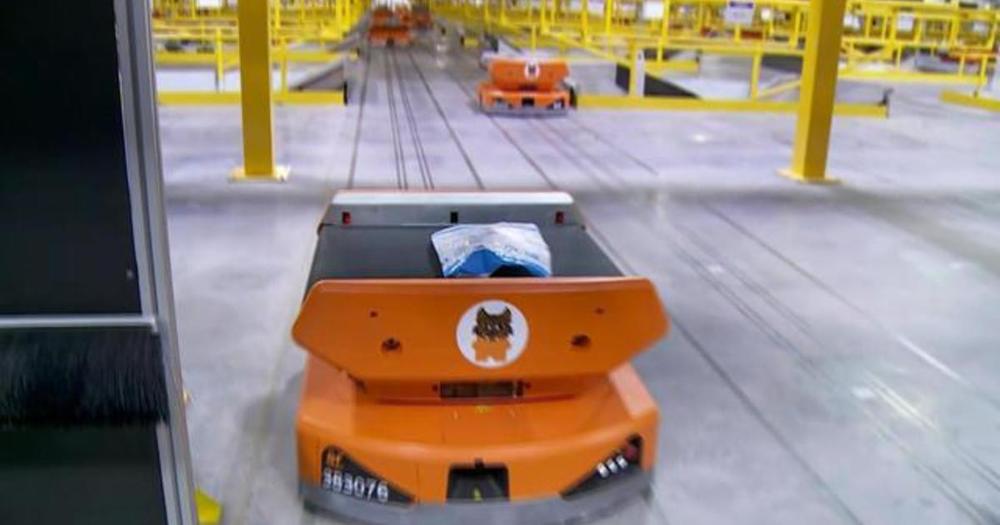Yandex unveils Sonata.
Get the latest international news and world events from around the world.

Amazon to spend $700 million to train 100,000 workers for digital age
Amazon is a global leader in the use of artificial intelligence and robots – but first on “CBS This Morning,” the company is revealing a major plan to invest in its human workforce, too. The online giant will spend more than $700 million to provide 100,000 employees with new skills for the digital age by 2025.
At Amazon’s 125,000 square foot facility just outside Denver, it looks like robots are running the show. But behind each of these roughly 800 devices is a skilled employee like Nicole Bayer, who manages the daily flow of traffic at this center as a floor control specialist. Bayer said more robots means higher package volume. As a result, she said, “we need more associates to package our volume, not less.”
Before coming to Amazon a few years ago, Bayer said she’d been out of the workforce for years. She credited the company’s employee programs for relaunching her career. “I got a lot of technical skills out of it that helped me get promoted,” she said.
Jeff Wilke, Amazon’s worldwide consumer CEO, likened the program to grad school. The programs’ names feel collegiate, from “Machine Learning University” for onsite training, to “Amazon Technical Academy” for software engineer roles. The company is also offering programs like Associate2Tech, which trains employees to move into technical roles, and AWS Training and Certification, which teaches employees about the cloud and gives them knowledge “essential to operating in a technical field.”

Does the world need a 3D-printed rocket?
That’s all a way of saying that behind every successful launch is a tremendous amount of labor and a vast network of suppliers working in concert to assemble each vehicle. By streamlining the supply chain, Relativity hopes to sharply cut production time.
But this goal of printing Terran 1’s more than 100-foot-tall (30-meter) exterior and fuel tank comes with an additional challenge: creating printers that can accomplish the task. “Building a rocket company is hard, building a 3D-printing company is hard, and building both together at the same time is borderline nuts,” says Ellis, Relativity’s CEO. “But while it’s the hardest part of the job, it is also the secret sauce that will make Relativity a world-changing company.”
There’s still a way to go before doing any world changing, though. “We’re not going to fly a rocket unless we get these metal 3D-printing technologies developed,” Ellis admits. “So that provides quite a bit of existential kick in the butt to figure it out, because this is the only way we ’ re going to actually make it to our goal.”
China’s cleanest province shows what the country’s future could hold
Lessons from Qinghai.
🔎 Learn more about China’s solar capacity: https://wef.ch/2Jd7ooq #amnc19

Coral biodiversity could help reefs thrive again
My own work examines whether greater diversity of coral species on reefs can help corals survive and thrive. In a study published earlier this year, my colleague Mark Hay and I found evidence that the answer is yes. This finding could help to inform broader strategies for making coral reefs more resilient in altered oceans.
In nature, more is better
Are ecosystems healthier if they contain many species than if they harbor only a few? This is a central question in ecology. Generally, scientists have found that ecosystems with more diverse foundation species – those that define a system and are inseparable from it, such as trees in a forest – tend to be healthier and function better.


Telomere shortening rate predicts species life span
The exact causes of aging are still not understood, and it is unclear why some species live less than 1 d, while others can live more than 400 y. Research suggests that telomeres are related to the aging process, but a clear relationship between the life span of a species and initial telomere length has not been observed. Here, we measure the telomere lengths of a variety of different species. We find that, in fact, there is no strong correlation between the life span of a species and initial telomere length. However, we find a strong correlation between the telomere shortening rate and the life span of a species.
Telomere shortening to a critical length can trigger aging and shorter life spans in mice and humans by a mechanism that involves induction of a persistent DNA damage response at chromosome ends and loss of cellular viability. However, whether telomere length is a universal determinant of species longevity is not known. To determine whether telomere shortening can be a single parameter to predict species longevities, here we measured in parallel the telomere length of a wide variety of species (birds and mammals) with very different life spans and body sizes, including mouse (Mus musculus), goat (Capra hircus), Audouin’s gull (Larus audouinii), reindeer (Rangifer tarandus), griffon vulture (Gyps fulvus), bottlenose dolphin (Tursiops truncatus), American flamingo (Phoenicopterus ruber), and Sumatran elephant (Elephas maximus sumatranus). We found that the telomere shortening rate, but not the initial telomere length alone, is a powerful predictor of species life span.
NASA’s Marshall Space Flight Center
How will the Artemis program work?
Here’s how we’re going to the Moon — to stay — and learning how to journey to Mars and beyond go.nasa.gov/2HfXxj0
